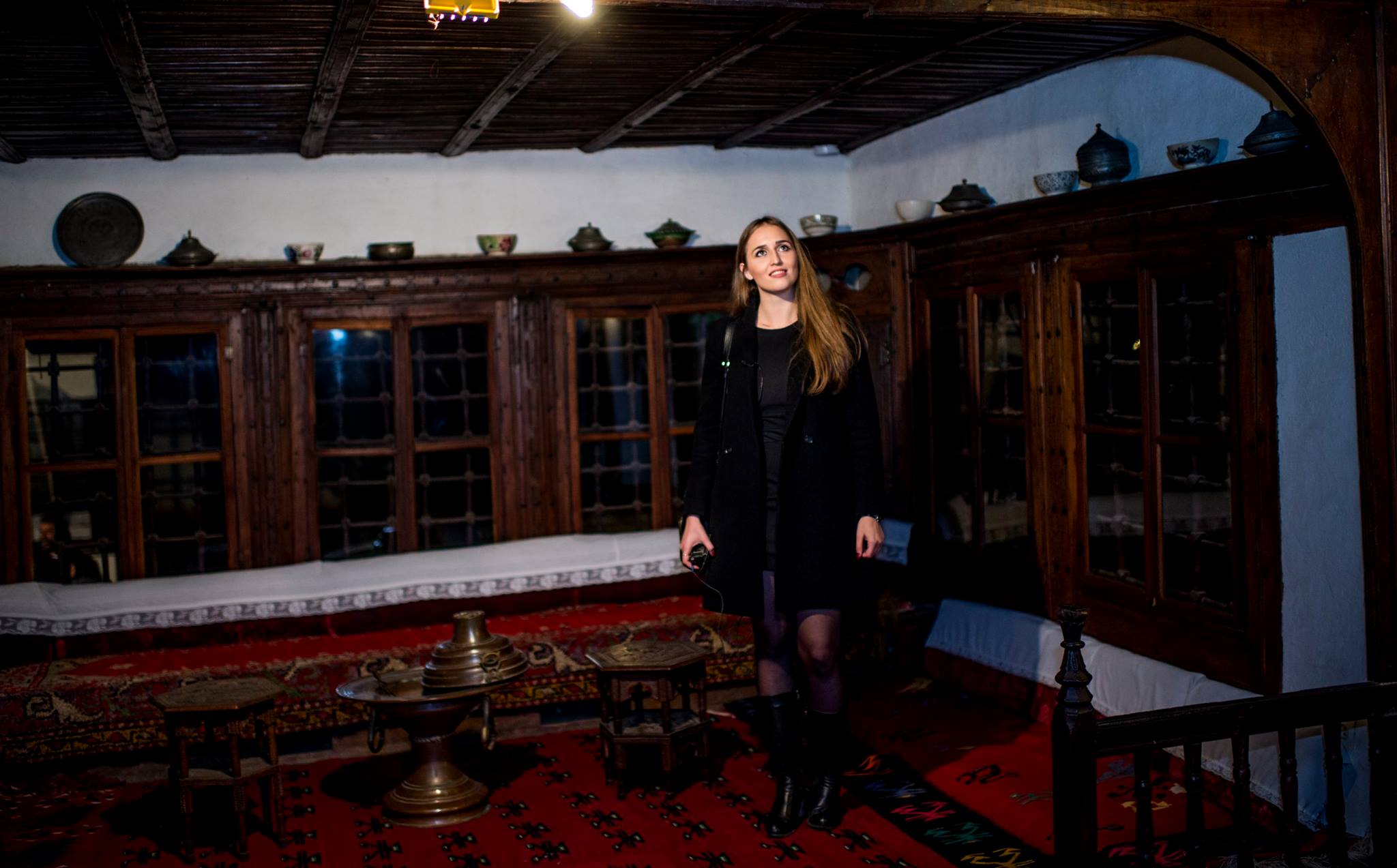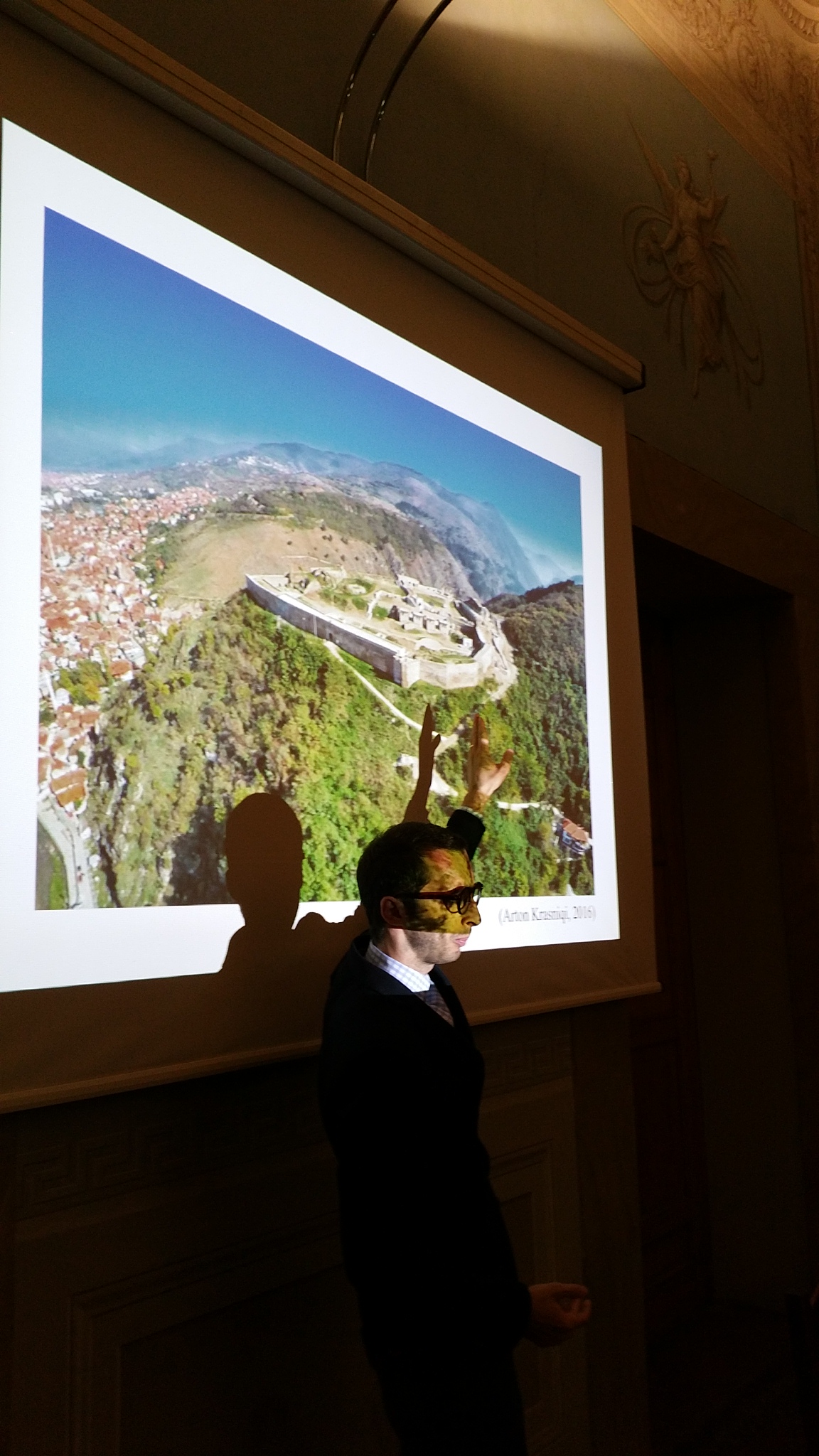A very special and creative idea, for the preservation and promotion of cultural heritage had taken the road to CHwB and strongly supported on Friday night was held at the Ethnological Museum in Prishtina.
https://www.youtube.com/watch?v=4KLAHFg29a4
This project aimed to interpret not only the history of the Ethnological Museum but also the spatial and architectural content of the building, using sound as the main medium. Beyond the historical texts and narrative story of the guide, visitors will experience the building and its history through sound, noise, and traditional music. The idea was to promote cultural heritage with more interactive methods, out of the box.

And to see this installation in the courtyard of the Ethnological Museum people started to come and once the space was filled, a speech was helb by theorganizers, Anyla Berisha and Visar Kuci, and the supporter of this idea, the director of CHwB, Sali Shoshi, who praised this evening as very special, where he stated that it is the first time to support a project within a completely experimental platform, created by CHwB, called ‘Heritage Space’.
"After all this quarterly work, tonight was proved that we were right to support this project. It is the first time in Kosovo that something is interpreted through sound and I believe that this example will inspire us that many places like this museum, will be interpreed in the future by sound but also in other ways", said Sali Shoshi, the director of CHwB, in the opening.


There were a lot of participants in the event, so to continue the journey through the rooms of the museum, they were divided into three groups, each group accompanied by a guide who were the key part of this installation, since they keep alive the history and the soul of this building. First was visited the 18th century building, a house that belonged to Emin Gjiku complex, a bey family who lived there until 1956.
But because of the Serbian pressure, as many other Albanian families, they had migrated to Turkey.

While in the other house opposite to the first one, the rooms in the past had another function but the exhibition was installed in such a way as to present four main topics: birth, life, death and cultural heritage. The uniqueness of this visit were the sounds created, which accompanied visitors differently in each room, by adapting to the place and sparking a feeling that someone was living there. The bathroom was accompanied by the sound of water, in the room of birth- the sound of the new born baby, in the kitchen- the sound of dishes, in the wedding dressing room- wedding sounds, old instruments were accompanied by the sounds of the lute and other instruments, and everything else was adapted in the best possible way, by giving the audience emotions and experience. Behind these melodies the premises of the museum, stood the creative work of Visar Kuçi.


The initiator of this installation, Anyla Berisha said that the building is not only visual, but architecture and should be experienced in three dimensions.
"The initial idea was was to install sounds or voices in many buildings, such as Hammam or a house of war and neglect, of people who are no longer there. It was supposed to be something beyond the framework, not only to enter and see but to become a part of life and the building, " said Anyla. She further said she felt very good by spontaneous reactions of people. "The reactions were spontaneous, the water in the bathroom, cradle creaking, or the sounds of birth or death, was the effect surprises and this was the goal that when people leave the building to remember what they have experienced in each room of the building, and not only the dates, " concluded Anyla.


The idea of the exhibition was very well liked by the Professor and musician Sedat Kuqi, who claimed that he never had a chance to see such an exhibition followed by sound, in Kosovo and beyond.
"Tonight we saw many artifacts, some of them we have never seen before but all this is accompanied by special sounds. The sounds represent mainly our tradition and ritual instruments played at that time, there was the lute, violin and many other instruments, "said Sedat Kuqi. This installation presented tonight will remain a permanent part of the Ethnological Museum and every visitor will be able to hear these sounds.
Otherwise Anyla claimed that the same idea will tend to continue in other building restored by CHwB, such as Prizren Castle and others.
Text: Jeta Zymberi (Kultplus.com) Photo: Arben Llapashtica









